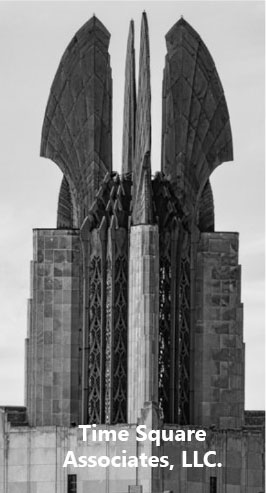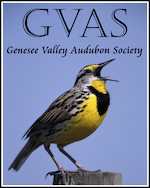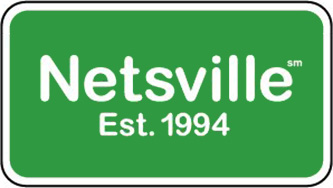Late winter and early spring brings the return of the falcons to the nesting territory they have occupied since Mariah settled in Rochester over a decade ago. Where were they over the winter? Only they can know for sure, and the falcons aren’t talking.
Peregrines are creatures of habit. Like tony jet-setters with expensive apartments and high-rise condos scattered through midtown Manhattan, wild Peregrines typically select two or three nest sites within a given territory, and move among them from year to year. Mariah bucks this trend, as do many of her urban-dwelling cousins. It turns out that the nest boxes set up by their human benefactors on the tops of buildings, smokestacks and other lofty structures are so ideally placed that there’s little need to wander around– a bit of a contradiction for a bird whose name means “wanderer”.
Mariah and Kaver have been tearing up the skies over downtown Rochester, but surprisingly they spend a considerable amount of time not flying, in the rather boring, but no doubt important task of perching near the nest site. It’s their way of staking claim to the territory, and letting others know that there’s no room at the inn. They’ve even been seen escorting other Peregrines out of the area since their return in late February. So Step 1, Reclaiming the Territory, is complete.
Time for Step 2: Courtship
Peregrines mate for life. There are exceptions to that rule, but we won’t concern ourselves with that for now. Since Kaver’s arrival in 2002 (he replaced Cabot-Sirocco, who failed to return that year) he’s been Mariah’s constant companion. Scientists and other smart people who study Peregrine behavior think that this fidelity has as much to do with the birds’ affinity for a particular territory as it does with their affininty for each other. So every year, we find the Peregrines re-establishing their bond through a complex set of ritualistic courtship behaviors. The male makes bold aerobatic flights that might include loops, tight turns, and swooping dives.

Like a teen with a flashy sports car, he’s trying to impress her with his speed and agility. If she likes what she sees, the male starts coming around with gifts– not flashy jewels, but something even more precious to a female falcon– food. By bringing food, Kaver demonstrates his hunting prowess, assuring Mariah that he’ll be a good provider for her family.
If she accepts the food, the falcons will meet in the nest box for another ritual. This time, the birds face each other and take turns bowing– a very polite way of courting. This is their talk time, too. While they’re bowing Peregrines vocalize with a series of gentle sounds called “ee-chupping”.
On to Step 3: Mating
As with humans, mating isn’t just a way to procreate. Peregrines’ mating activity also establishes and reinforces the relationship, what experts call the “pair bond”. Mating activity for Peregrines may take place many times each day. In fact, watchers in Rochester have seen Mariah and Kaver mating as often as every half hour!
Mariah initiates the mating by landing on a convenient perch and lifting her tail. Kaver, circling nearby will fly to her and land gently on her back to mate before flying off a few seconds later. In falcon relationships, the female is always the dominant partner (come to think of it, that sounds like most human relationships too!). She decides where the nest will be, when to mate, and when to lay her eggs.
Some birds have external sex organs similar to mammals, but most, including Peregrines, have something called a cloaca. Both males and females have a cloaca near the end of their tails. The cloaca is a common opening through which the birds expel waste and it is also used as the conduit for reproduction. During the act of copulation the birds touch their cloacas together, at which point the sperm is transferred from Kaver to Mariah. Mariah stores the sperm in her cloaca until she’s ready to fertilize her egg.
Unlike humans, Peregrine females can choose when to fertilize their eggs. That’s a great advantage in the wild. It means Mariah can store Kaver’s sperm and only begin the egg production process when she’s found a safe nest site.
Step 4: Nest Preparation
The final step is to prepare the nest. In the wild, a Peregrine’s nest is little more than a depression that’s been scraped out of the dirt and gravel on a cliffside or rocky outcrop. Not surprisingly, scientists call this kind of nest a “scrape”. The name lacks imagination, but there’s no denying its accuracy.
In nest boxes like the one on the Kodak tower, Mariah and Kaver’s human hosts have provided a bed of pea gravel several inches deep. To build the scrape in the nest box, one of the falcons (Kaver, usually) pushes stones out of the depression with its feet. On the camera it sometimes looks as if Kaver is ice skating while he’s excavating the scrape. Other times he gets right down on his belly and pushes with both feet. Then he looks more like a body surfer.
The courting, mating and nest-building behavior continues up until the time Mariah is ready to lay her eggs. I’ll cover that in my next post.
-Jess


















